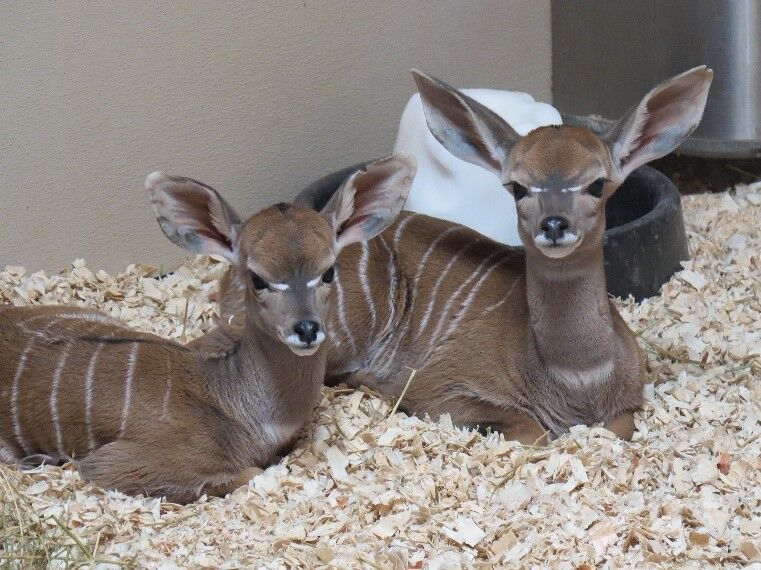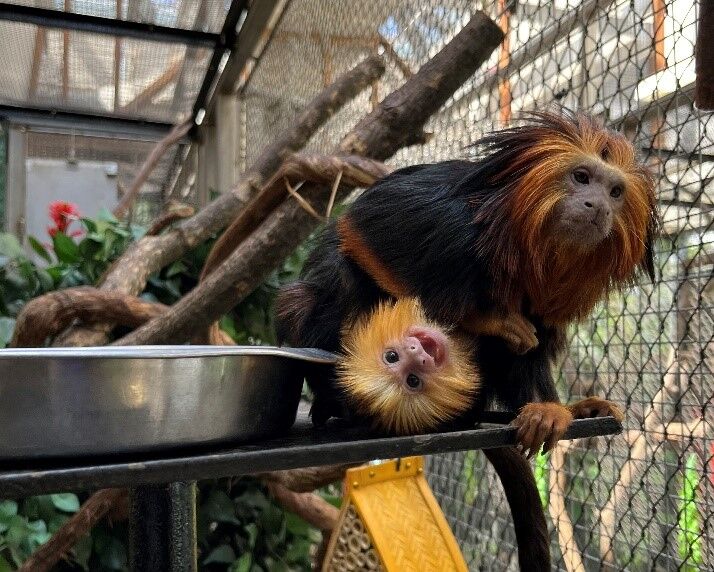
The Smithsonian’s National Zoo’s animal population has increased by three.
A male kudu calf named Zahi (“splendid” in Somali) was born Feb. 21 to a first-time mother, 4-year-old Gal. On March 6, a female kudu calf named Jamilah (“beautiful” in Somali) was born to 8-year-old Rogue. Jamilah is Rogue’s fourth calf, and the first-ever female lesser kudu calf born at the zoo.
Garrett, a 12-year-old male, is the father of both calves.
According to the zoo, those calves and their mothers can be seen in the zoo’s outdoor exhibit every morning.
“Gal and Rogue have been very attentive toward each other’s calf and share cleaning and feeding duties,” the zoo said in a statement Wednesday.
Lesser kudus are native to northeastern Africa, and the International Union for Conservation of Nature considers them a “near-threatened” species.

And over at the zoo’s Small Mammal House, keepers have welcomed a new golden-headed lion tamarin. Born with a twin around March 10, it’s the third for mother Lola and father Coco.
The twin, unfortunately, died about a week later.
But the parents have already been busy raising another pair of twins that Lola birthed last Oct. 7, and those twins “have a shown a lot of interest in the newborn.”
Those twins have an appointment with the veterinarian in a few weeks, which is when keepers will learn their sexes.
Golden-headed lion tamarins are native to northeastern Brazil and are considered endangered, due in part to habitat loss.








